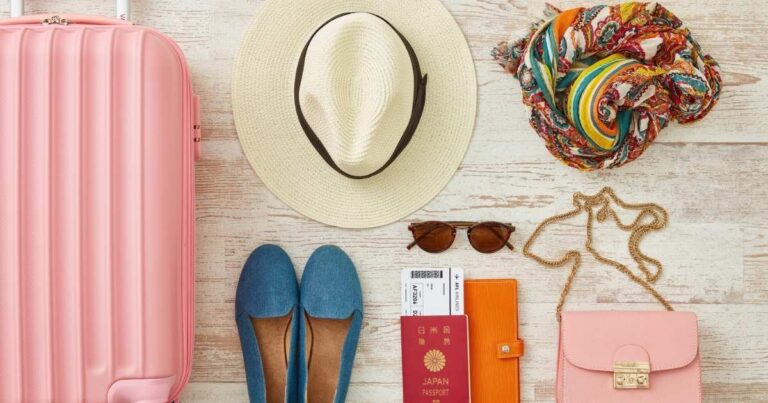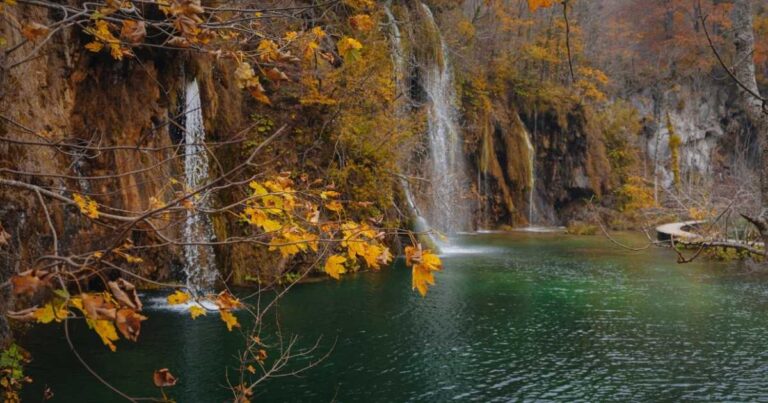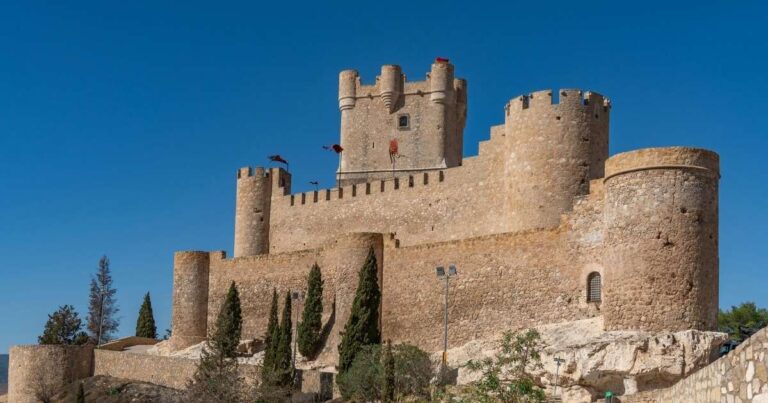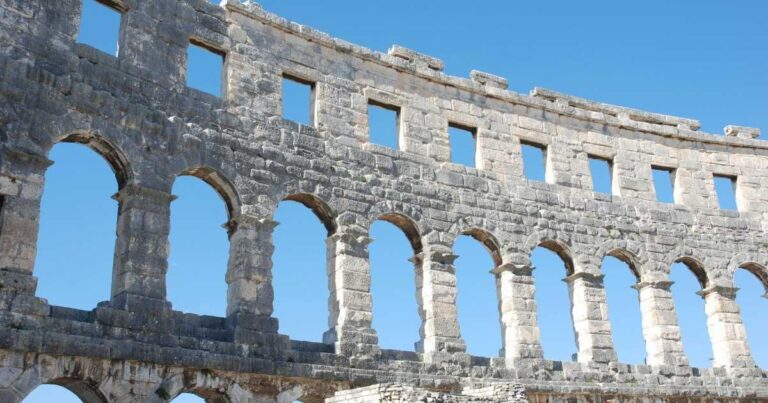Croatia is calling, and it’s no wonder why. With its sparkling Adriatic coastline, ancient cities, and lush national parks, this European gem is a dream for first-time travelers. Planning your first trip to Croatia can feel overwhelming, but don’t worry—I’m here to guide you every step of the way. From choosing where to go to packing smart, this guide will help you craft an unforgettable adventure. Ready to dive into the magic of Croatia? Let’s get started.
Why Croatia Deserves a Spot on Your Travel List
Picture this: you’re sipping wine on a sun-drenched terrace, gazing at turquoise waters, with a medieval fortress in the background. That’s Croatia in a nutshell. The country blends natural beauty with rich history, offering something for everyone. Whether you’re a beach bum, a history nerd, or an outdoor enthusiast, Croatia delivers. Its compact size means you can explore diverse regions in one trip, and its affordability compared to other European destinations is a big bonus. So, why wait? Let’s plan your perfect Croatian escape.
When to Visit Croatia for the Best Experience
Timing your trip is key to enjoying Croatia at its best. The summer months, June to August, are peak season, with warm weather perfect for beach days and island-hopping. But expect crowds and higher prices, especially in popular spots like Dubrovnik and Split. If you want to avoid the hustle, consider the shoulder seasons—April to May or September to October. The weather is still pleasant, the seas are swimmable, and you’ll have more space to explore. Winter, from November to March, is quieter, with festive markets in Zagreb but fewer coastal activities. What’s your travel vibe? That’ll help you pick the perfect season.
Weather and Crowds to Plan Around
Croatia’s Mediterranean climate means hot summers and mild winters along the coast, while inland areas like Zagreb can get chilly. Summer temperatures hover around 80°F, ideal for sunbathing, but popular destinations can feel packed. Spring and fall offer temperatures in the 60s and 70s, making them great for sightseeing and hiking. Check local festival schedules, like Dubrovnik’s Summer Festival in July, to align your trip with cultural events or avoid peak crowds.
Budget Considerations by Season
Your wallet will thank you for visiting in the shoulder seasons. Hotels and flights are cheaper, and you’ll find better deals on rentals like boats or apartments. Winter is the most budget-friendly, especially inland, but some coastal attractions may close—plan for summer to snag early-bird deals, as prices can spike closer to your travel dates.
Choosing Your Must-Visit Destinations
Croatia’s regions are as diverse as they come, each offering a unique flavor. For your first trip, focus on a mix of coastal and inland spots to get the whole experience. Here’s a breakdown of top destinations to consider.
Dalmatian Coast: Split and Dubrovnik
The Dalmatian Coast is Croatia’s postcard-perfect star. Start in Split, where Diocletian’s Palace blends Roman history with modern cafes. It’s a lively hub for exploring nearby islands like Hvar or Brač. Then, head to Dubrovnik, the “Pearl of the Adriatic.” Its medieval walls and orange-tiled rooftops are straight out of a fairy tale. Walk the city walls, grab a gelato, and soak in the views. Both cities are great for first-time visitors, offering a rich history, vibrant nightlife, and easy access to beaches.
Istria: Rovinj and Pula
If you love food and charm, Istria is a must. Rovinj, with its pastel-colored buildings and cobblestone streets, feels like a romantic painting. It’s perfect for strolls and seafood dinners. Nearby, Pula boasts a Roman amphitheater that rivals Rome’s Colosseum. Istria’s inland villages, like Motovun, are truffle heaven—don’t skip a tasting. This region suits travelers craving a slower pace and culinary delights.
Zagreb: The Capital’s Urban Charm
Don’t overlook Zagreb, Croatia’s vibrant capital. The Upper Town’s historic streets are home to St. Mark’s Church, while the Lower Town buzzes with museums and markets. It’s an excellent base for day trips to Plitvice Lakes or the Zagorje region’s castles. Zagreb is ideal if you want a city fix with a cozy, welcoming vibe.
Plitvice Lakes and Krka National Parks
For nature lovers, Plitvice Lakes National Park is non-negotiable. Its cascading waterfalls and emerald lakes are a UNESCO World Heritage Site. Krka National Park, closer to Split, lets you swim near its falls—a rare treat. Both are doable as day trips but deserve a full day to explore. Bring comfy shoes and a camera.
Crafting Your Itinerary
How long should you stay? A 7- to 10-day trip is ideal for first-timers, allowing you to explore a few regions without rushing. Here’s a sample itinerary to spark ideas.
A Balanced 10-Day Plan
Start with two days in Zagreb, exploring the city and maybe day-tripping to Varaždin. Then, head to Plitvice Lakes for a full day of nature. Next, spend three days in Split, including a day trip to Hvar or Krka. Finish with four days in Dubrovnik, with time for a beach day or a visit to Lokrum Island. This plan balances city, nature, and coast, offering a taste of Croatia’s diverse landscape.
Shorter Trips: 5 to 7 Days
Got less time? Focus on Dalmatia. Spend three days in Split, with an island day trip, and two to three days in Dubrovnik. Alternatively, pair Zagreb with Plitvice for a quick inland adventure. Keep travel times in mind—buses and ferries are standard, but renting a car gives flexibility.
Getting to and Around Croatia
Croatia is well-connected and easy to navigate, making it accessible even for first-time visitors. Let’s break down your options.
Flying to Croatia
Major airports in Zagreb, Split, and Dubrovnik welcome international flights. From Europe, budget airlines like Ryanair and easyJet offer affordable routes. From the U.S., expect a layover in a hub like Frankfurt or London. Book flights 3-6 months in advance for the best deals, especially for summer travel.
Transportation Within Croatia
Buses are a reliable and budget-friendly mode of transportation, connecting major cities and towns. Ferries, like those run by Jadrolinija, are essential for island-hopping. Renting a car is excellent for exploring Istria or inland areas, but parking in cities like Dubrovnik can be tricky. Trains exist but are less common. For short distances, rideshare apps or taxis are often the best options. Plan ferry schedules ahead, as they can sell out in peak season.
Where to Stay: Hotels, Apartments, and More
Croatia’s accommodation options suit every budget, from luxury resorts to cozy guesthouses. Here’s what to know.
Hotels vs. Private Apartments
Hotels in cities like Dubrovnik and Split range from boutique to five-star. For a local vibe, book a sobe (private room) or an apartment through platforms like Airbnb. Apartments often include kitchens, saving you money on meals. In smaller towns like Rovinj, family-run guesthouses offer a charming atmosphere and insider tips—book early for summer, as prime spots fill fast.
Budget-Friendly Stays
Hostels in Zagreb and Split are great for solo travelers or backpackers. Look for deals in shoulder seasons, and consider staying just outside city centers for lower rates. Camping is also popular, especially near national parks or coastal areas.
What to Eat and Drink in Croatia
Croatian cuisine is a highlight, blending Mediterranean and Central European flavors. You’re in for a treat.
Must-Try Dishes
On the coast, savor fresh seafood like grilled octopus or black risotto. In Istria, truffle pasta and prosciutto are stars. Inland, try čevapi (grilled sausages) or pasticada, a slow-cooked beef stew. Don’t miss burek, a flaky pastry filled with cheese or meat. For dessert, rozata (caramel custard) is a Dalmatian classic.
Wine and Local Drinks
Croatia’s wine scene is underrated. Try Plavac Mali reds in Dalmatia or Malvazija whites in Istria. Rakija, a fruit brandy, is a local favorite—sip it slowly. Coffee culture is enormous, so linger at a cafe with an espresso. Stay hydrated with tap water, which is safe and delicious.
Packing Tips for Your Croatian Adventure
Packing smart makes your trip smoother. Croatia’s climate and activities call for versatility.
Clothing and Essentials
Pack lightweight clothes for summer, plus a light jacket for evenings. Comfortable walking shoes are a must for cobblestone streets and park trails. Bring a swimsuit, even in shoulder seasons, and a hat for sun protection. For winter, layer up with a warm coat, especially inland. A reusable water bottle and daypack are handy for excursions.
Travel Gear
A universal power adapter (Type F) is essential, as is a portable charger for long days out. Bring sunscreen and bug spray for parks. A small phrasebook or translation app is helpful, although English is widely spoken. Don’t forget travel insurance for peace of mind.
Budgeting for Your Trip
Croatia is generally more affordable compared to Western Europe, although costs vary by region and season. A mid-range budget of $100-$150 per day covers accommodation, meals, and activities. Save by eating at local konobas (taverns), skipping overpriced tourist traps, and using public transport. Entry fees for sites like Plitvice or Dubrovnik’s walls are around $10-$30, so factor those in. Set aside extra space for souvenirs, such as olive oil or lace.
Cultural Tips and Etiquette
Croatians are warm and welcoming, but a few tips help you blend in. Greet locals with a friendly “Dobar dan” (good day). Dress modestly when visiting churches, and tip 5-10% at restaurants if service isn’t included. Respect quiet hours in residential areas, especially in small towns. Croatians love sharing their culture, so ask about local traditions or history—they’ll appreciate your interest.
Staying Safe and Connected
Croatia is generally safe, with low crime rates; however, be cautious in crowded tourist spots to avoid pickpockets. Tap water is secure, and healthcare is reliable if needed. For connectivity, consider purchasing a local SIM card or using an eSIM for affordable data. Wi-Fi is standard in cafes and hotels. Download offline maps for rural areas, such as national parks.
Conclusion: Your Croatian Journey Begins
Planning your first trip to Croatia is an exciting step toward an unforgettable adventure. From the sun-soaked Dalmatian Coast to the lush trails of Plitvice, this country has it all. With a bit of planning, you’ll create memories that last a lifetime. So, grab your passport, book that flight, and get ready to fall in love with Croatia. Where will your journey take you?
FAQS
Q1: How many days do I need for a first trip to Croatia?
A 7- to 10-day trip is ideal to explore a mix of coastal cities, islands, and inland sites without rushing. For a shorter trip, 5 days can cover Dalmatia or Zagreb with a national park.
Q2: Is Croatia expensive for travelers?
Croatia is affordable compared to Western Europe. Expect to pay $100-$150 per day for mid-range travel, which includes lodging, food, and activities. Shoulder seasons and local eateries help save money.
Q3: Do I need a car to get around Croatia?
Not necessarily. Buses and ferries connect major destinations, but a car offers flexibility for rural areas like Istria or national parks. Parking can be tricky in cities.
Q4: What’s the best region for a first-time visitor?
The Dalmatian Coast, including Split and Dubrovnik, is perfect for first-timers, offering history, beaches, and island access. Add Zagreb or Plitvice for variety.
Q5: Is English widely spoken in Croatia?
Yes, English is widely spoken in tourist areas, particularly among younger locals and in urban centers. A few basic Croatian phrases can enhance your experience in rural spots.







